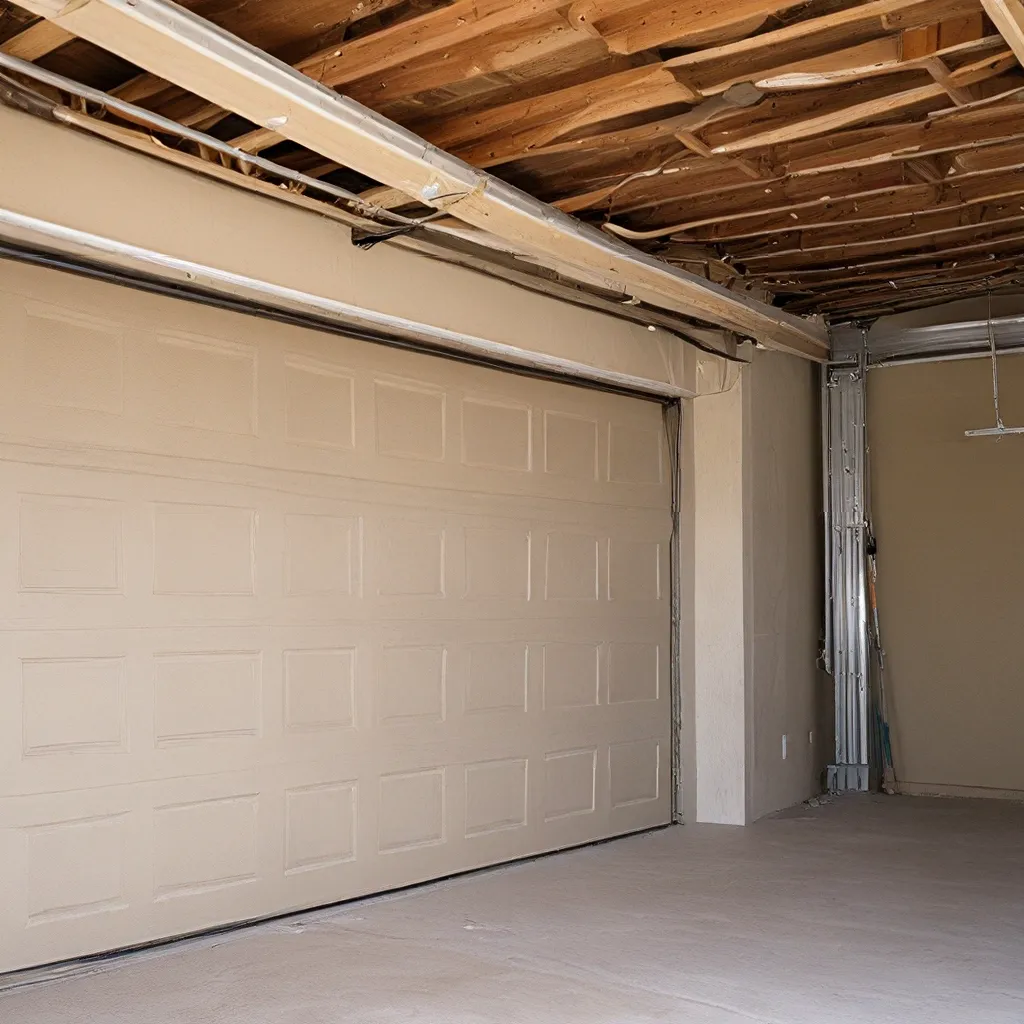
Maintaining the efficiency and performance of your garage door is crucial for ensuring year-round comfort, energy savings, and the overall functionality of your home or business. One of the most common issues that can impact a garage door’s efficiency is air leaks, which can lead to significant energy losses and uncomfortable indoor temperatures. In this comprehensive guide, we’ll explore the causes of garage door air leaks, provide practical steps for diagnosing and resolving them, and offer insights into the latest smart door technologies that can help maximize efficiency.
Understanding Garage Door Air Leaks
Air leaks in a garage door can occur for a variety of reasons, including poor weatherstripping, gaps around the door frame, and structural issues within the door itself. These leaks allow unconditioned air to enter the garage, compromising the thermal barrier and leading to higher energy costs for heating or cooling the space.
According to the Environmental Protection Agency (EPA), poor indoor air quality can lead to a range of health problems, including respiratory issues, decreased concentration, and reduced staff and student performance. Addressing air leaks in a garage door is an essential step in maintaining a comfortable and energy-efficient indoor environment.
Diagnosing Garage Door Air Leaks
The first step in resolving air leaks is to identify their source. Begin by visually inspecting the garage door, looking for any gaps, cracks, or areas where the weatherstripping may be worn or damaged. Pay close attention to the door’s perimeter, as this is a common location for air leaks.
As a former customer service representative for home warranty companies, I can attest to the importance of addressing air leaks promptly. Unresolved issues can lead to larger problems, such as moisture damage or pest infestations, which can be more costly to repair.
To further diagnose the air leaks, you can perform a simple test using a handheld infrared thermometer or smoke pencil. Scan the perimeter of the door, focusing on areas where you suspect leaks may be present. Look for significant temperature differences or the presence of moving air, which can indicate the location of the leaks.
Resolving Garage Door Air Leaks
Once you’ve identified the source of the air leaks, you can take steps to resolve the issue. Here are some common solutions:
Weatherstripping Replacement: If the existing weatherstripping is worn, cracked, or no longer providing an effective seal, it’s time to replace it. Measure the perimeter of your garage door and purchase the appropriate weatherstripping material, ensuring a proper fit. Carefully remove the old weatherstripping and install the new one, following the manufacturer’s instructions.
Door Frame Sealing: Gaps around the door frame can also contribute to air leaks. Use a high-quality caulk or sealant to fill any cracks or spaces, creating a tight seal between the frame and the wall. Be sure to clean the surfaces thoroughly before applying the sealant for maximum effectiveness.
Door Panel Repair or Replacement: In some cases, the door itself may be the source of the air leaks, particularly if it has sustained structural damage or warping over time. Depending on the extent of the issue, you may need to repair or replace the door panel to restore an airtight seal.
Upgrades to Smart Door Technologies: Recent advancements in smart door technologies have introduced innovative solutions to address air leaks and improve overall efficiency. These technologies often include features such as automatic weatherstripping, door panel insulation, and remote monitoring and control, allowing homeowners to optimize their garage door performance with minimal effort.
Investing in professional door repair and installation services can ensure that these solutions are properly implemented, providing long-term benefits and peace of mind.
Maintaining Garage Door Efficiency
Addressing air leaks is an important step, but it’s equally crucial to maintain the efficiency of your garage door over time. Regular inspections and preventive maintenance can help identify and resolve issues before they become more serious.
As part of your maintenance routine, be sure to:
- Lubricate moving parts, such as hinges and rollers, to ensure smooth operation and minimize wear and tear.
- Check the balance of the door, ensuring that it opens and closes with ease and doesn’t place excessive strain on the mechanical components.
- Monitor the condition of the weatherstripping and sealants, replacing them as needed to maintain an airtight seal.
- Clean the door’s surface and track system to prevent the buildup of debris, which can impede performance.
By adopting a proactive approach to garage door maintenance, you can extend the lifespan of your door, reduce energy costs, and ensure the comfort and safety of your home or business.
Conclusion
Diagnosing and resolving garage door air leaks is a crucial step in maintaining the efficiency and performance of your home or commercial property. By understanding the causes of air leaks, implementing effective solutions, and incorporating smart door technologies, you can maximize the energy efficiency of your garage door while ensuring a comfortable indoor environment.
Remember, addressing air leaks is just one aspect of maintaining a well-functioning garage door. Regular inspections, preventive maintenance, and the use of professional door repair and installation services can help you keep your garage door operating at its best for years to come.


